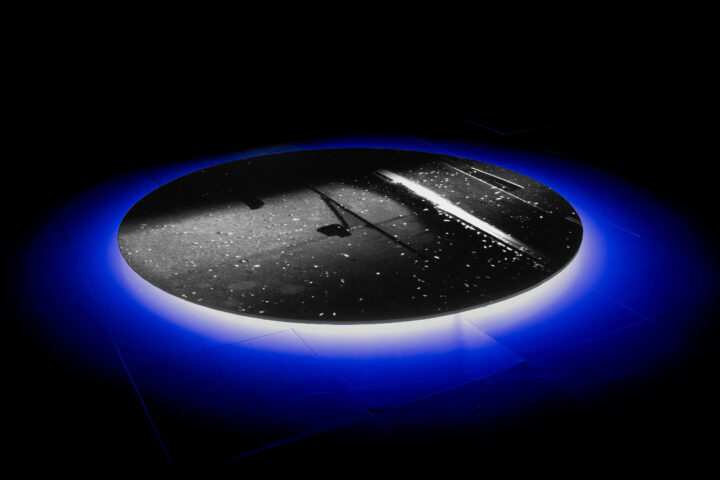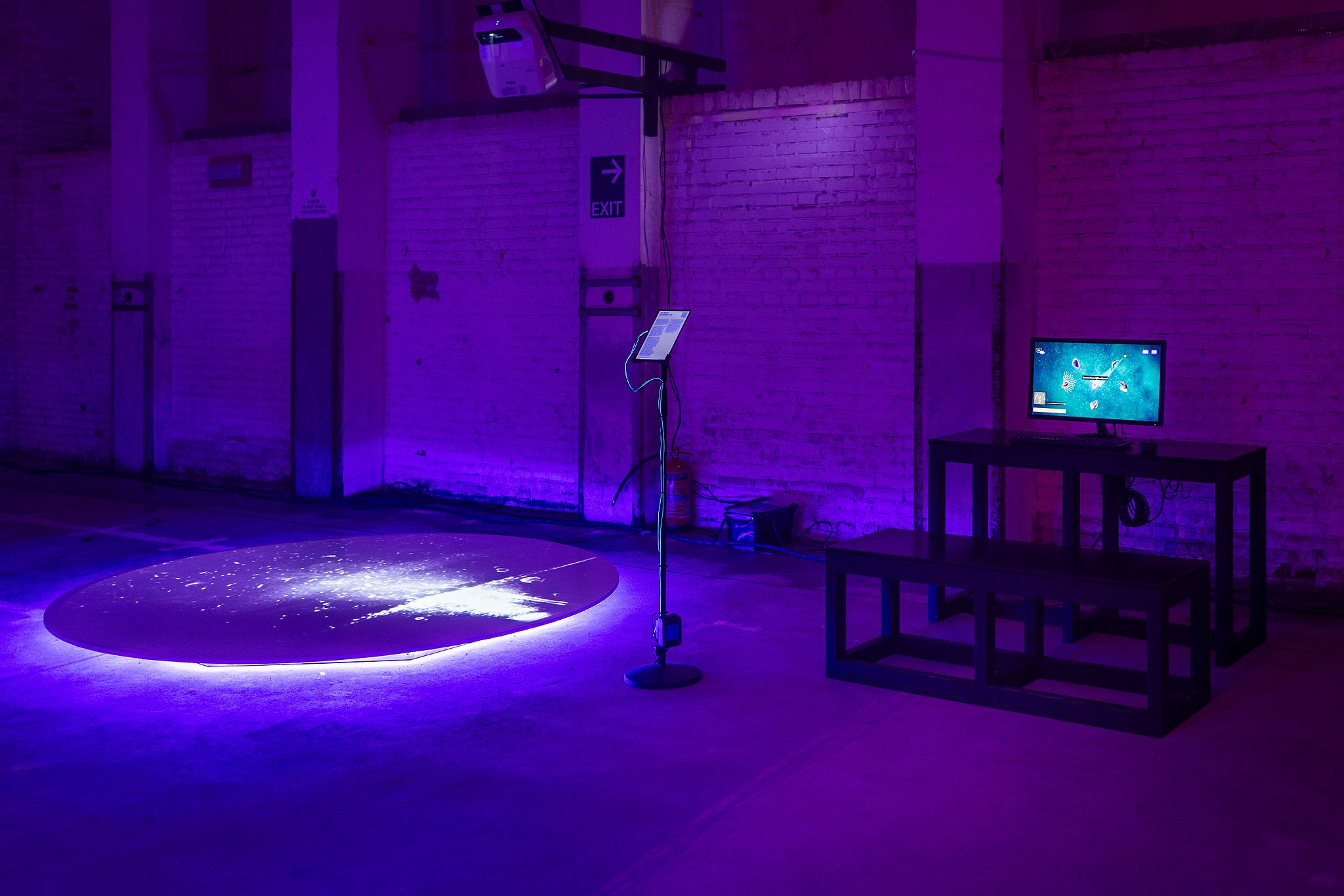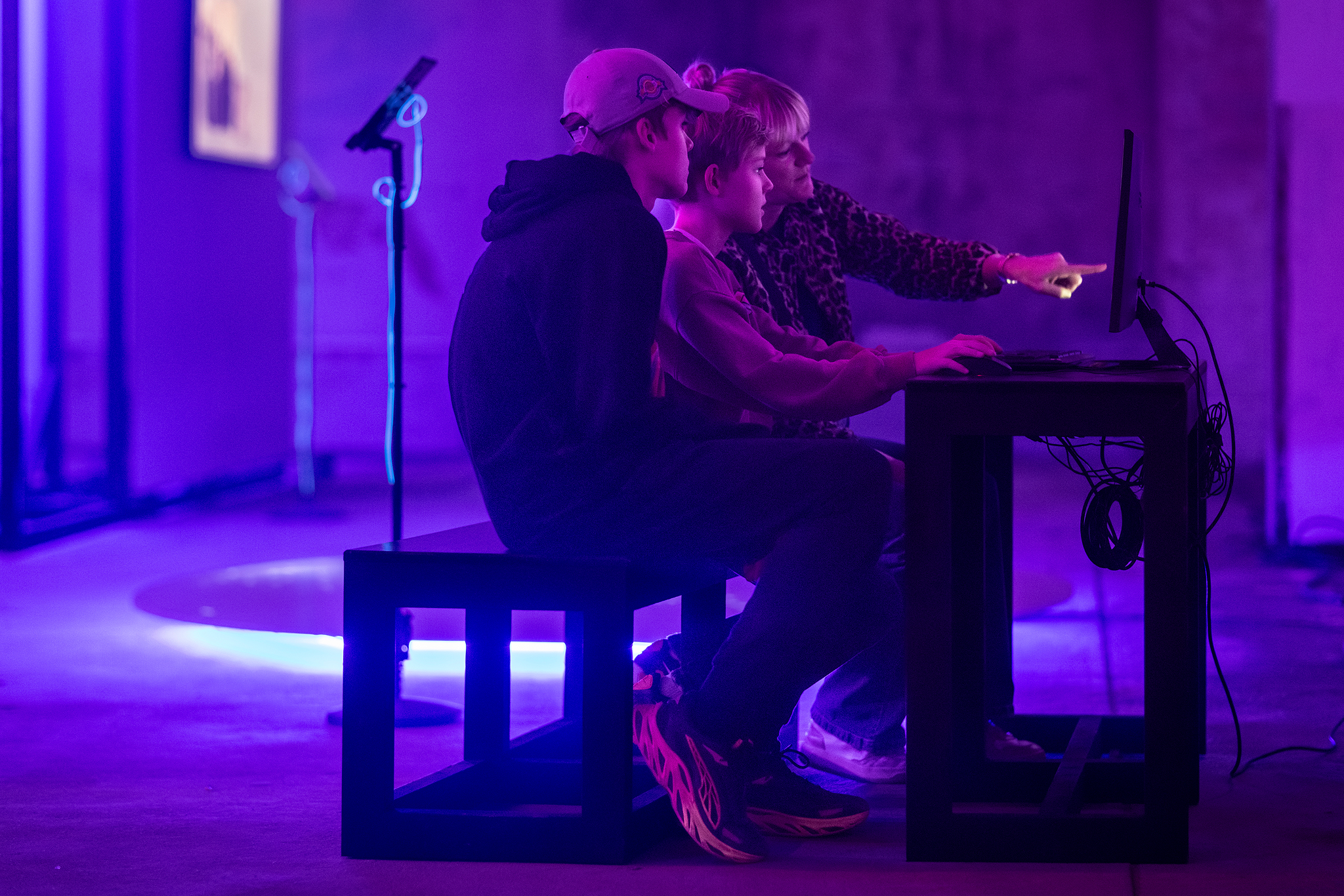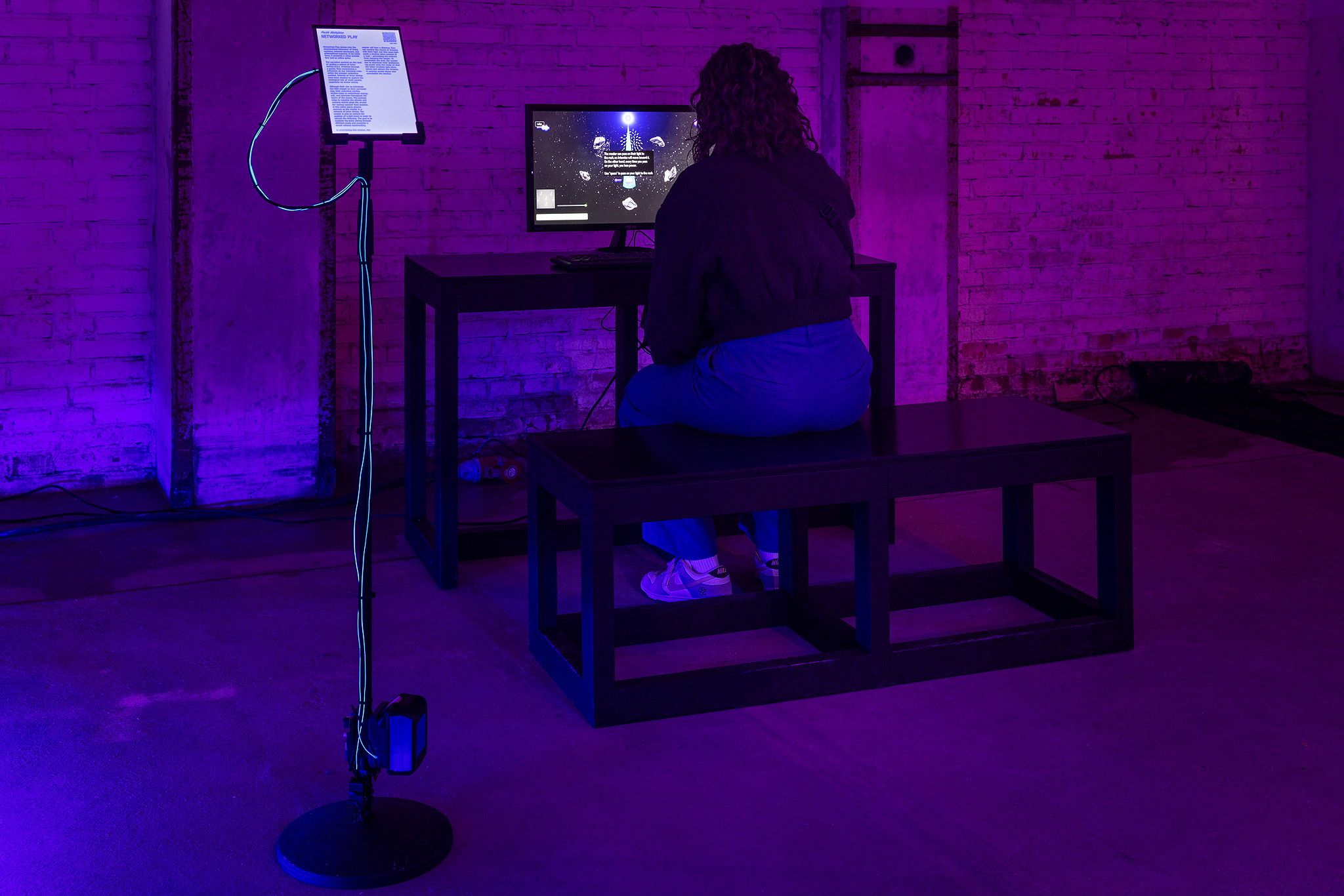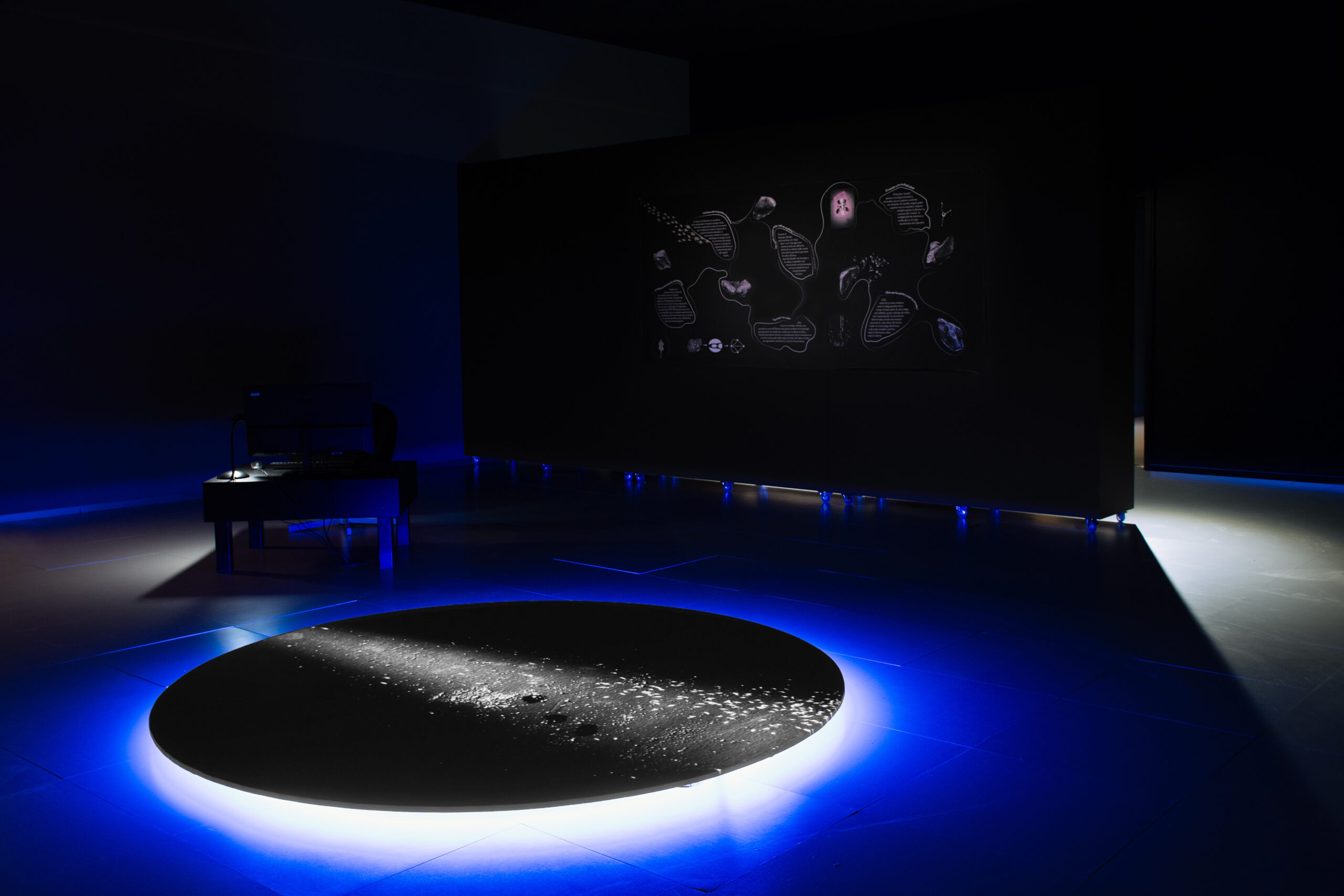
Networked Play, Decentralised Futures, ETOPIA Centre for Art and Technology, view of the exhibition, 2024.
Networked Play delves into the decentralized behaviour of living systems, network topologies, and philosophical inquiries. In its initial form, it presents a video installation and an online game. The narrative centres on the task of guiding a school of brine shrimp (a.k.a. Artemia) through a puzzle in order to open up a reflection on our individual roles within the broader collective context.
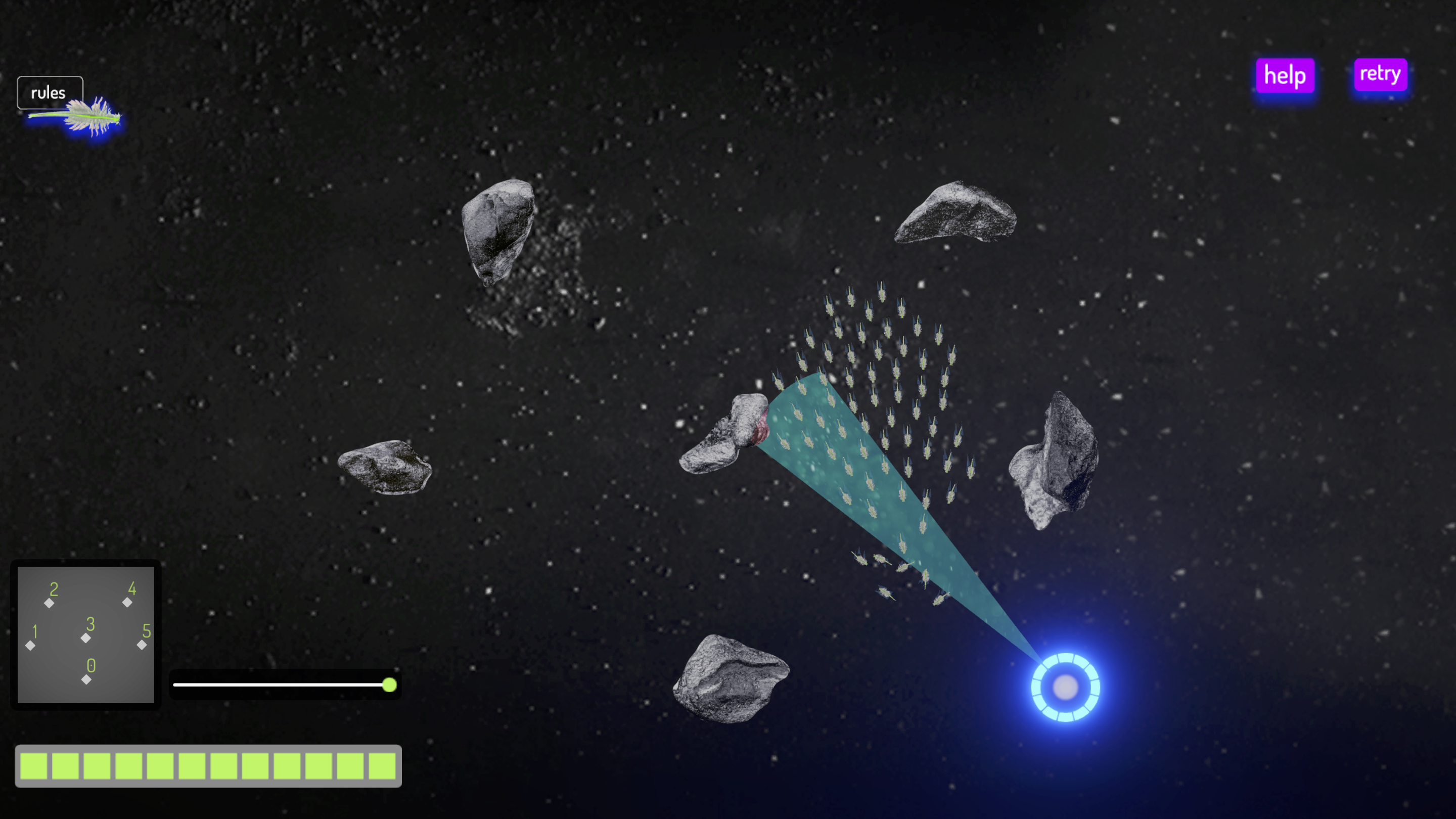
Schools of brine shrimp have been studied to explore the ecological role of small aquatic organisms on ocean mixing. Although their size as individuals has little impact on their surroundings, their collective swirling motion helps to redistribute energy, salt, and nutrients throughout the layers of the ocean. This process helps to regulate the climate and sustains marine plant life, crucial to the food sources of a variety of species.
Brine shrimp are naturally drawn towards sources of light. This tendency allows scientists to manipulate their collective movement by controlling light sources such as lasers or LEDs. However, within their group, nobody is telling the Artemias where to go or what to do. Instead, they self-organise to reach their common target. They navigate and adjust their paths, ensuring they avoid collisions with each other along the way.
In this online game, players connect as the master in a network of brine shrimp. The master is able to control the position of a light beam in order to attract the Artemias. The goal is to navigate the brine shrimp past various rock formations. The circuit is to be completed without backtracking – a reference to the ‘Konigsberg bridge problem’ and the foundations of graph theory.
In undertaking this mission, the master will face a dilemma: the swarm of Artemia can be controlled using the light, but this same light will cast a shadow when pointed at a rock, thus hindering the Artemia from reaching the target. To accomplish the task, the master has to distribute this (en)lightening power onto the rocks so that the rocks can irradiate the light themselves and attract the Artemia.
A surprise awaits those who are able to accomplish the mission.
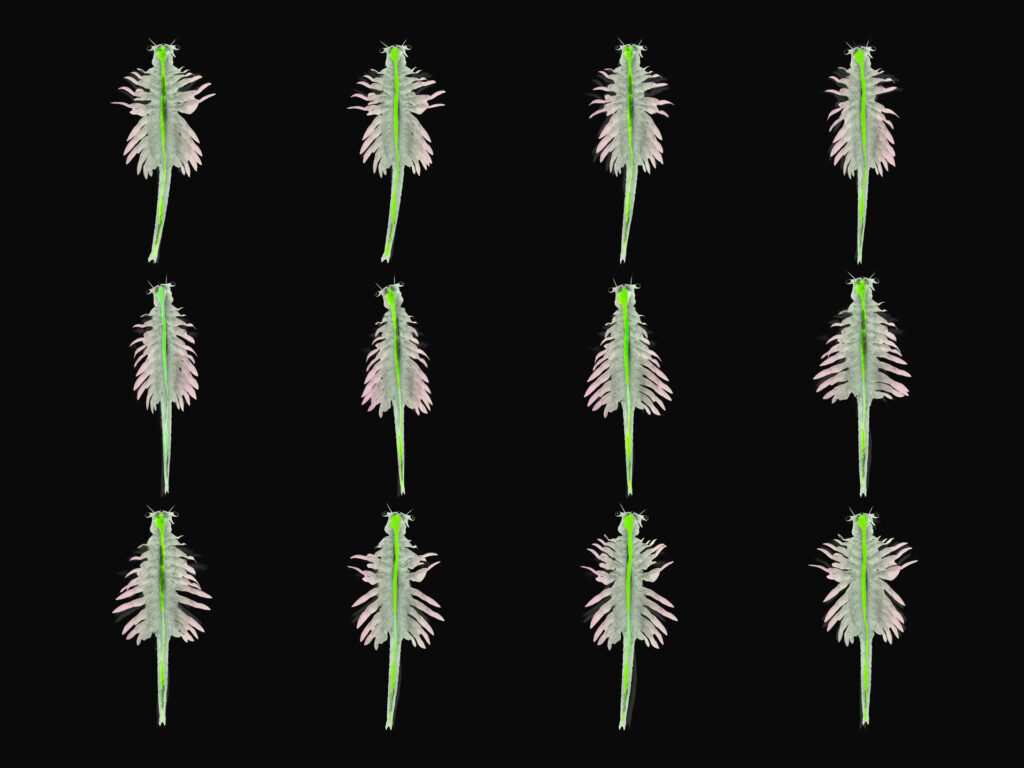
In Networked Play, the light distributed onto the rocks symbolically relays the individual decision to relinquish control in order to achieve a collective goal. The narrative imagines the transformation of centralized topologies into distributed networks. It refers to the notion that the collective effect within a network is greater than the sum of its parts. Just as the movement of Artemia collectively alters their environment, so too do our interconnected actions as individuals generate amplified effects on the planet.
In a collaboration with Dr. Prof. Tobias Seidl (Westfälisches Institut für Bionik, Bocholt, Germany) and Claudia Kruschel (Marine ecologist, Berlin, Germany), Paula Nishijima has researched into the swarming behaviour of Artemias, which originated the framework for the ludo-narrative of Networked Play’s online game. The footage of the experiments performed with Artemias in the lab were used for a video installation.
Credits
Co-funded by the European Union and Supported by ARTeCHÓ, initiative created by SERN – Startup Europe Regions Network (Belgium), Baltan Laboratories (Netherlands), FZC-Etopia Center for Art & Technology (Spain), Frankfurt School Blockchain Center (Germany) and MEET Digital Cultural Center (Italy).
Concept & visuals: Paula Nishijima
Game Design: Paula Nishijima & León Fenzl
Game & web development: León Fenzl
Scientists collaborators: Dr. Prof. Tobias Seidl (Westfälische Hochschule, Bocholt, Germany) & Claudia Kruschel (Marine ecologist, Berlin, Germany)
Sound design re-mixed from ‘Logic Moon’ (freesound.org)
